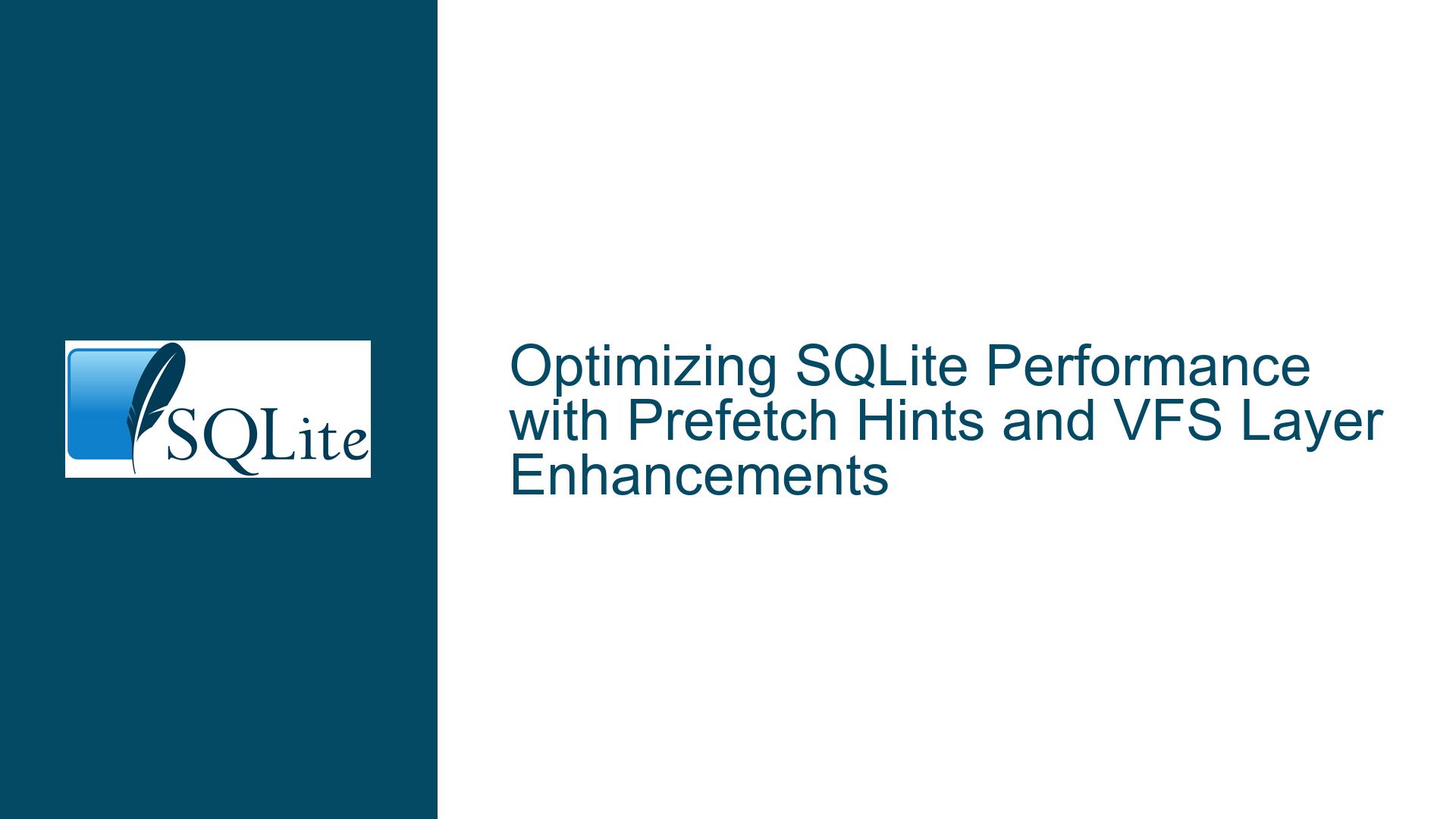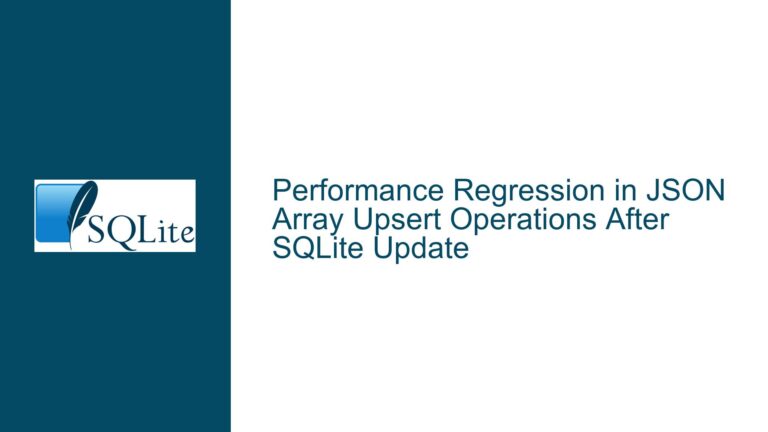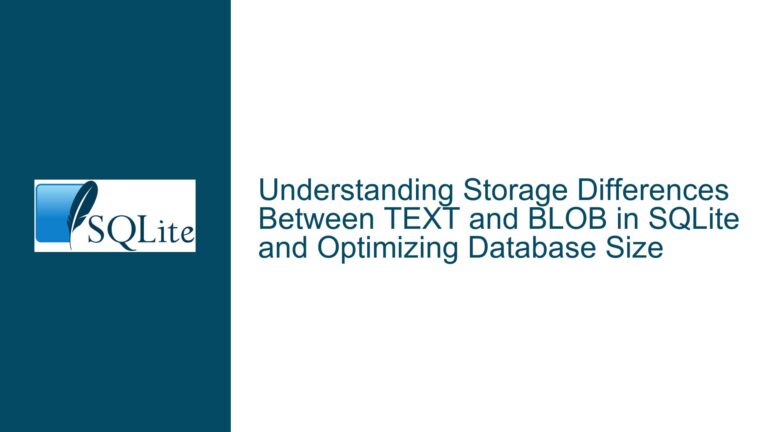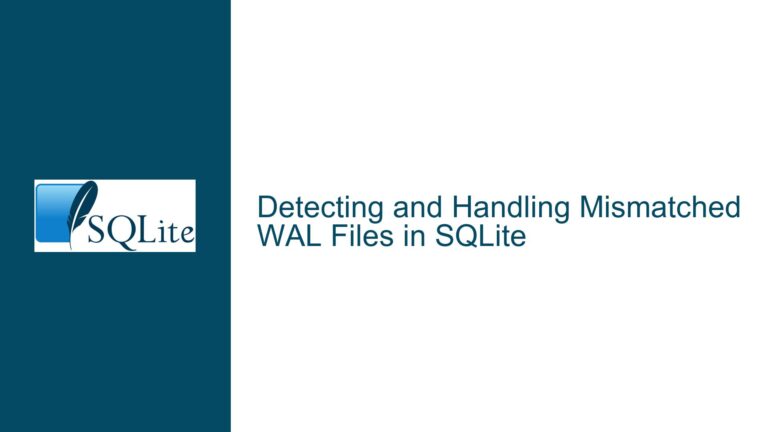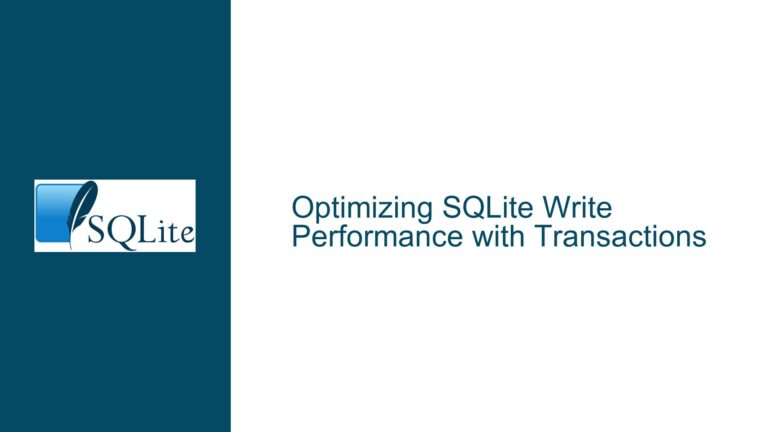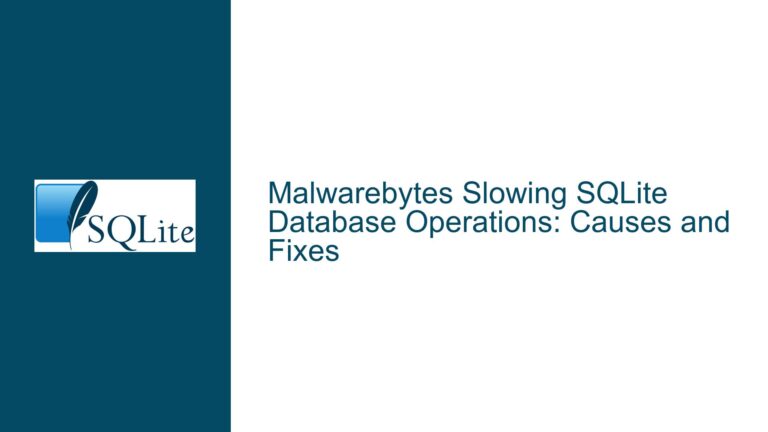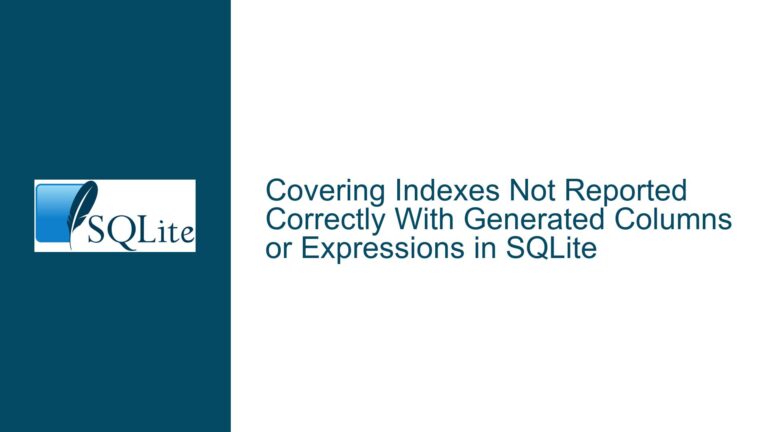Optimizing SQLite Performance with Prefetch Hints and VFS Layer Enhancements
Understanding the Role of Prefetch Hints in SQLite’s VFS Layer
The Virtual File System (VFS) layer in SQLite is a critical component that abstracts the underlying file system operations, allowing SQLite to operate seamlessly across different platforms and environments. One of the key performance bottlenecks in database systems, including SQLite, is the latency associated with disk I/O operations. This latency becomes particularly pronounced when performing index scans, especially non-clustered index scans, where the data pages are often scattered across the disk, leading to increased seek times.
Prefetch hints are a mechanism that could potentially mitigate this issue by allowing the database engine to inform the VFS layer about future read operations. This would enable the VFS to optimize the order in which pages are read from disk, thereby reducing seek times and improving overall query performance. The idea is that if the database engine knows that it will need to read a series of pages in a particular order, it can provide this information to the VFS layer, which can then reorder the read requests to minimize disk head movement.
However, implementing prefetch hints is not as straightforward as it might seem. The VFS layer would need to handle these hints in a way that does not introduce additional complexity or overhead that could negate the performance benefits. This requires careful consideration of how the prefetch hints are generated, how they are communicated to the VFS layer, and how the VFS layer processes these hints to optimize disk I/O operations.
Challenges in Implementing Prefetch Hints in SQLite’s VFS Layer
One of the primary challenges in implementing prefetch hints in SQLite’s VFS layer is the need to schedule prefetching operations outside of the current thread of control. If prefetching is done within the same thread, it could turn into a blocking operation, which would defeat the purpose of prefetching. Instead, the VFS layer would need to manage prefetching operations in a separate thread or through asynchronous I/O mechanisms. This introduces additional complexity in terms of memory allocation, synchronization, and error handling.
Another challenge is that the VFS layer would need to reconcile prefetch operations with actual read requests. For example, if a prefetch operation is still in progress when a read request comes in, the VFS layer would need to ensure that the read request is satisfied either from the prefetched data or by initiating a new read operation. This requires careful management of prefetch buffers and synchronization between the prefetching thread and the main thread handling the read requests.
Furthermore, the benefits of prefetch hints are not guaranteed. In some cases, the overhead of managing prefetch operations could outweigh the performance gains, especially if the prefetch hints are not accurate or if the underlying storage system does not benefit significantly from reordered read requests. This makes it difficult to justify the additional complexity and overhead of implementing prefetch hints in the VFS layer.
Strategies for Implementing and Optimizing Prefetch Hints in SQLite
Despite the challenges, there are several strategies that could be employed to implement and optimize prefetch hints in SQLite’s VFS layer. One approach is to use a combination of caching and reordering mechanisms within the VFS layer. For example, the VFS layer could maintain a fixed-size associative cache that stores recently accessed pages. When a prefetch hint is received, the VFS layer could reorder the read requests to minimize disk head movement and store the results in this cache. Subsequent read requests could then be served from the cache, reducing the need for additional disk I/O operations.
Another strategy is to leverage existing operating system mechanisms for prefetching and caching. For example, the VFS layer could use the posix_fadvise system call on Unix-like systems to provide hints to the operating system about future read operations. This would allow the operating system to optimize its own caching and prefetching mechanisms based on the hints provided by the VFS layer. This approach has the advantage of being relatively simple to implement and does not require significant changes to the VFS layer.
In addition to these strategies, it is important to carefully analyze the performance impact of prefetch hints in different scenarios. This could involve profiling the database engine and the VFS layer to determine the effectiveness of prefetch hints in reducing disk I/O latency. Based on this analysis, it may be possible to fine-tune the prefetching mechanism to maximize its benefits while minimizing the overhead.
Finally, it is worth considering the use of larger block sizes for I/O operations. Increasing the block size can help to saturate the disk link and reduce the number of read requests, which can improve overall performance. However, this approach also has trade-offs, as larger block sizes can increase the latency of individual read requests and may not be beneficial for all types of queries. Therefore, it is important to carefully evaluate the impact of larger block sizes on the specific workload and storage system being used.
In conclusion, while prefetch hints have the potential to significantly improve the performance of SQLite by reducing disk I/O latency, implementing them in the VFS layer is a complex task that requires careful consideration of various factors. By employing a combination of caching, reordering, and operating system mechanisms, it may be possible to achieve meaningful performance improvements without introducing excessive complexity or overhead. However, it is important to carefully analyze the performance impact of these strategies and fine-tune them based on the specific workload and storage system being used.
